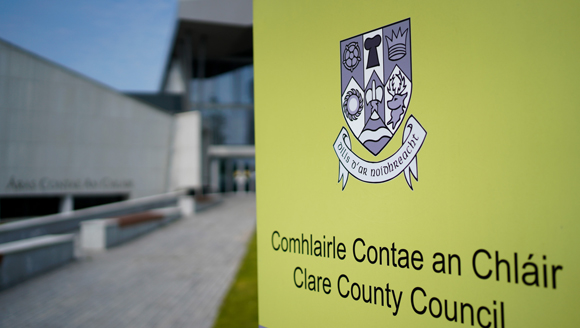FURTHER objections have been lodged in response to a plan from Eir to install a 21-metre mast on its exchange in Scariff.
Submissions are currently being accepted on the planning application, which could see the replacement of an existing 12-metre wooden structure with a much higher telecommunications mast with dishes, antennas and other equipment.
More concerns have been voiced locally, in recent days, this time from residents of the nearby Connaught Road and Derg View development. Additional letters of objection have estimated that the proposed structure would be located just ten metres from some of the homes in the adjacent estate. The submission contends that a mast on the scale of that proposed should not be allowed in such close proximity to the residential development.
Another submission, on behalf of a local family, says their property is already overlooked by the existing mast. “Increasing the height as proposed will result in an even larger eyesore”, the objection drawn up by Killaloe Consultants Ltd states.
The consultants also take issue with Eir’s claims regarding the height of the existing and proposed masts. They contend that the one proposed would be close to two-and-a-half times higher than the mast that is already in place.
“The proposal as advertised and noted on the application states that the proposal is to replace the existing 12 m mast with a 21-metre mast,” the objection outlines.
“The documents submitted suggest the existing mast is 10 metres high. Furthermore, the antennae when fixed in a square grid on top of the mast will result in an overall height of 23.8m from ground level. Thus, the overall height will be almost 2.5 times the existing height.”
The objection adds that the mast would not only be “an eyesore” towering over their client’s home, but would be “visually obtrusive from a wide area of Scariff”.
Killaloe Consultants add that other elevated sites could have been considered for the mast, “which would only require a much-reduced mast height to achieve the same coverage”.
Concerns are also raised about the possible impact on public health and questions are raised over the stability of the proposed structure. The objection describes the proposed mast as “top heavy” and at risk from “high winds which now appear to be much more intense and frequent due to climate change”.
The submission concludes that: “It is necessary for Eir to re-assess their land and take concerns of adjoining property owners into account and relocate this industrial scale development to a more elevated location, where a much-shortened mast would suffice to obtain the same coverage”.
For its part Eir argues that the proposed mast would be screened by the exchange building and by mature trees, and that it is essential to 3G and 4G coverage for homes and businesses.
As a justification for the new mast, Eir states that “existing infrastructure is inadequate to fulfil the current and forecast demand for new technologies and communication services”. Eir says that the new mast would be able to accommodate more operators and boost coverage for residents and businesses.
In its application, Eir also says that a site at Drewsborough where it operates a 27-metre mast, along with Vodafone, is not considered suitable. It contends that replacing the mast on the exchange “is the only realistic and feasible option available”.
The company also maintains that the project is in line with the objectives of the National Development Plan, Project 2040, The National Planning Framework, The Report of the Mobile & Broadband Taskforce & Action Plan for Rural Development and the Our Rural Future policy document.
“Failure to provide these services will have an adverse impact on the local area and its economy,” the application also states.
The Council is accepting submissions on the application up to January 25. At this point, the authority has given February 15 as an indicative decision date.
ENDS

